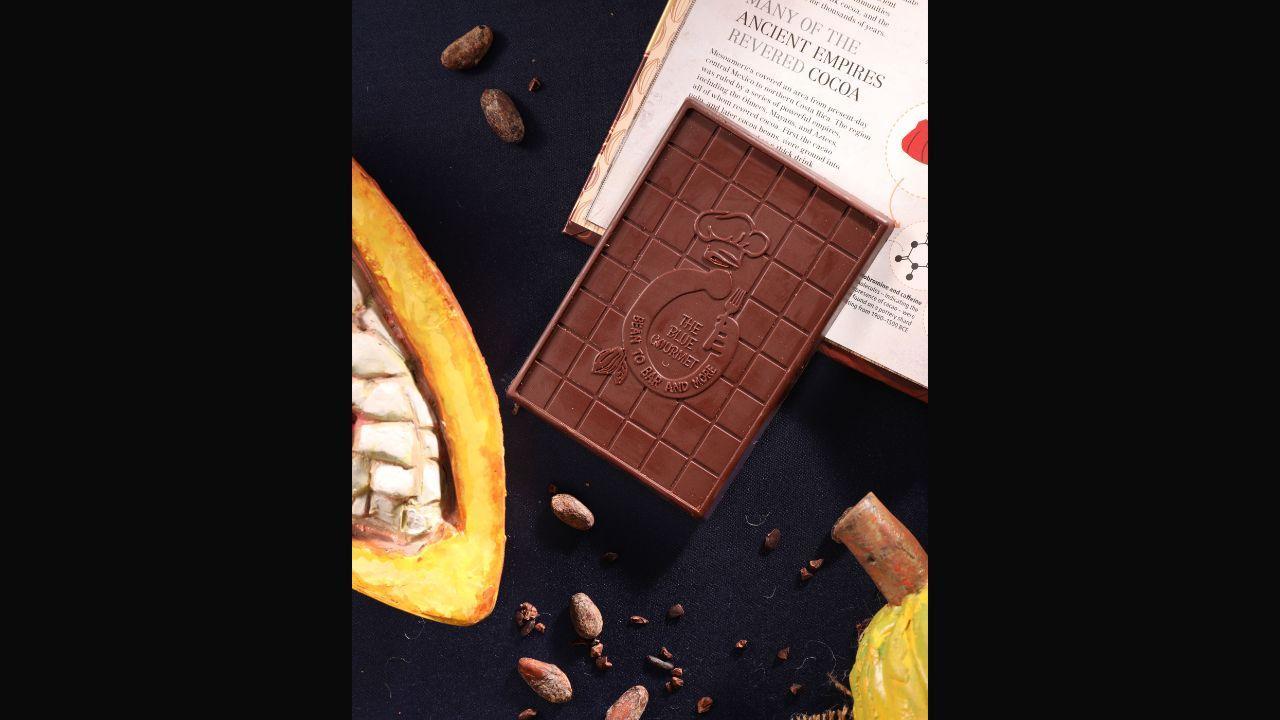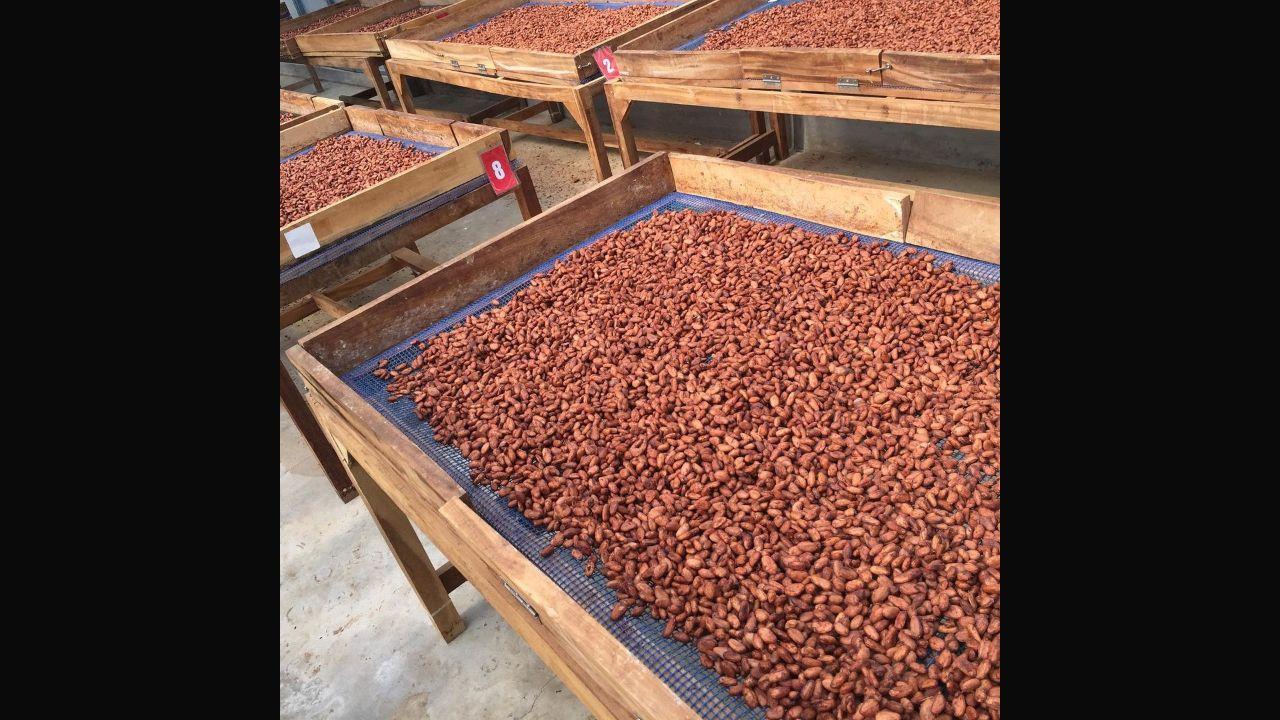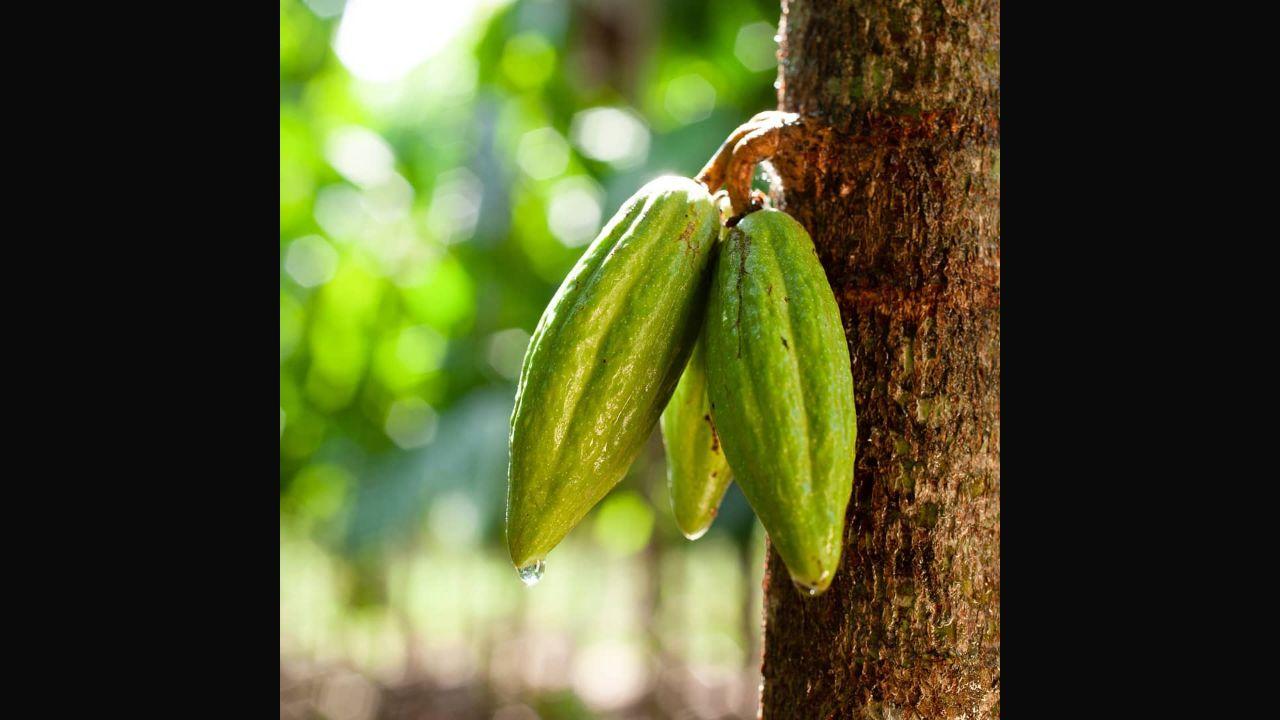As many people around the country are gorging on chocolates, the ‘bean-to-bar ‘chocolate movement is gathering steam. It is breaking down how we consume and perceive good chocolate

The Blue Gourmet, a Mumbai-based chocolate brand, which is set to launch in September, uses the bean-to-bar method. Photo: The Blue Gourmet
If there is one food that brings people together, it has to be chocolate. While cuisines may differ across cultures, the mass appeal of chocolates has managed to forge friendships and relationships around the world. However, consuming chocolate is slowly becoming a conscious activity, which involves people learning more about where the chocolate comes from.
ADVERTISEMENT
In recent years, the way we perceive chocolate has been changing not only around the world but closer home, in India, too. A name for this change which is being popularly tossed around is ‘bean-to-bar chocolate’. Mid-day spoke to chocolatiers to understand the buzz around the concept, which also extends to and is linked with terms like ‘farm-to-bar’ and ‘tree-to-bar’. These essentially come down to a more personalised approach — the brand manages all the steps starting from buying the cocoa beans right until making the final chocolate bar.
Vikas Temani, founder and business head, Paul and Mike, a Kochi-based farm-to-bar chocolate brand, explains, “Bean-to-bar is where you take the dried bean and roast it, grind it, and add sugar, milk and flavours to it.” However, when it comes to farm-to-bar, even before the dried cocoa bean is ready, there are other steps which have to be done and that usually takes place near the farm. “So, the seed is broken from the fruit and put into wooden boxes for fermentation and then it is dried. These steps are also very crucial. So, it is important to decide when you are going to harvest the fruit, at what stage of ripening and what is the fermentation process you are going to apply to steer the flavour into different directions.”  Drying of the cocoa beans at Paul and Mike's production facility in Kerala. Photo: Paul and Mike
Drying of the cocoa beans at Paul and Mike's production facility in Kerala. Photo: Paul and Mike
This method of making chocolate has given rise to a number of homegrown brands in the last five years, who are going beyond the nutty flavours to literally add spice and everything nice to chocolate. Many consumers today want to experience distinct flavours, which would have previously not been thought of by chocolatiers, who have been involved in the large scale production method.
Jumping on this bandwagon of producing new-age chocolate is The Blue Gourmet, a Mumbai-based bean-to-bar chocolate company, which is set to launch in September. The new venture has been started by Rahul Bajaj, owner, Le Sutra Hospitality, which also owns Out Of The Blue in the city. While Bajaj has only just launched, he fell in love with the cacao plant almost half a decade ago. He says, “We have done our homework with cacao from different countries such as India, Philippines and the continent of Africa.” He and his team have been researching it since then and saw the scope of the ‘gorgeous miracle fruit’, which led to the birth of his sustainable, local, and organic brand.
After scouring the world for the best cacao and realising that it could be found in one’s own neighbourhood is what led Bajaj to look at sourcing it from south India. “We are currently sourcing it from a farm that is especially growing cacao for us in Kerala. We have been working really hard on the fermenting and roasting process on our own,” he explains. Once the cacao beans are fermented and roasted, they use the traditional method of stone grinding them and finally produce couverture chocolate, with the help of Khandsari sugar, which is extracted from liquid jaggery. While they also use refined sugar, this version is for those who want to eat healthy chocolate.

The chocolate-making process starts from the cacao plant in the farms in Kerala for Paul and Mike. Photo: Paul and Mike
The timing of The Blue Gourmet’s entry comes when Indian chocolate brands are getting recognised abroad too. A little over a month ago, Paul and Mike won the silver at the International Chocolate Awards for their Sichuan pepper and orange peel chocolate bar. Temani, who is the founder and business head of the brand, backed by Synthite, a Kochi-based food company supplying food extracts, says it was something that was completely unexpected. However, their mastery of the product is growing fast.
The brand, which is a little over three years old, and named after two foreign farmers, has been actively participating in competitions since they started, which Temani says helps them benchmark themselves. While researching, Temani realised they were sitting on a gold mine for chocolatiers, as Kerala is an ideal place to grow their own cocoa. While Bajaj’s journey with making chocolate starts at the beans, Temani’s starts right at the farm. The terms may differ but their thought process is almost identical as it all gets down to the kind of cocoa you are using to make the chocolate.
Temani explains, “We are based right in the heartland of the cocoa growing area in Kerala. So, we have a geographical advantage when it comes to sourcing and controlling the quality from the start, which is very critical when you are talking about fine flavour cocoa.” He emphasises that controlling the time of harvest and fermentation is important if one wants to get the best flavour of cocoa, which forms a very important part of bean-to-bar chocolate. To explain the process to the average consumer, Temani compares it to the process of wine-making, which demands careful attention at all times and it is essentially the attention to detail, which ensures the perfect bar of chocolate. It is also the reason why he thought they could do a better job at making chocolate. The fact that Synthite exports spices, vanilla and more, made them consider exploring flavours which are not ultra-niche — including thandai, Alphonso mango, jamun and sithapal. They soon intend to launch one with the flavour of guava too.
There is a reason why brands like The Blue Gourmet and Paul and Mike are becoming popular among people. They are among several other brands, which are catering to the consumer who wants to experiment with their chocolates. “Till 20 years ago, we used to think that only the French could make good wine but globalisation has shown that there are so many beautiful wines across the world including India, which have won competitions too. So, the hegemony of France is long gone when it comes to wine, and it is the same with beer. The monopolies have simply vanished in every industry.”
It is also why Temani thinks the bean-to-bar chocolate movement can grow in India simply because it is investment-friendly. “A person can start it out of his home with the help of homemade equipment like grinders, which are used to make the dosa batter. It is much easier for an enthusiast to start making bean-to-bar chocolate,” he says, adding that it is a misconception among people — and even venture capitalists — that such chocolate is difficult or expensive to make.

Workers separating the cocoa beans from the plant at Mondelez India's farms in south India. Photo: Mondelez
Among the larger players, Mondelez India started the Cocoa Life in 2010, a little over 55 years after they planted the first experimental cocoa farm in Kerala, and have extended it to three other south Indian states. Since then, the multinational food company says it has helped 100,000 farmers take up cocoa farming in the four states. They currently source more than one-third of their cocoa locally in India.
Highlighting the rise of the aware and informed consumer, Roopak Bhat, cocoa operations lead in India for Mondelez says the bean-to-bar method is an extension of what people are looking for. “A bean-to-bar chocolate is one that brings out the best properties of local cocoa beans, through right techniques starting at the farm. From growing trees with the best practices and plucking the fruit at the right time to harvesting and processing, experts like chocolatiers are involved at every stage. The process doesn’t just improve the taste and quality of chocolate, but also uplifts the lives of cocoa farmers by providing the right opportunity for their produce.”
He adds, “The bean-to-bar method is undoubtedly growing and gaining traction amongst businesses as well as consumers. With a special focus on craftsmanship, quality, flavour and sustainability, the process has successfully forged a brighter future for cocoa farmers and built a sustainable ecosystem, all the way from the farm to the fridge.”
Also Read: How Mumbai’s Kolis relish dried fish on rainy days
 Subscribe today by clicking the link and stay updated with the latest news!" Click here!
Subscribe today by clicking the link and stay updated with the latest news!" Click here!







